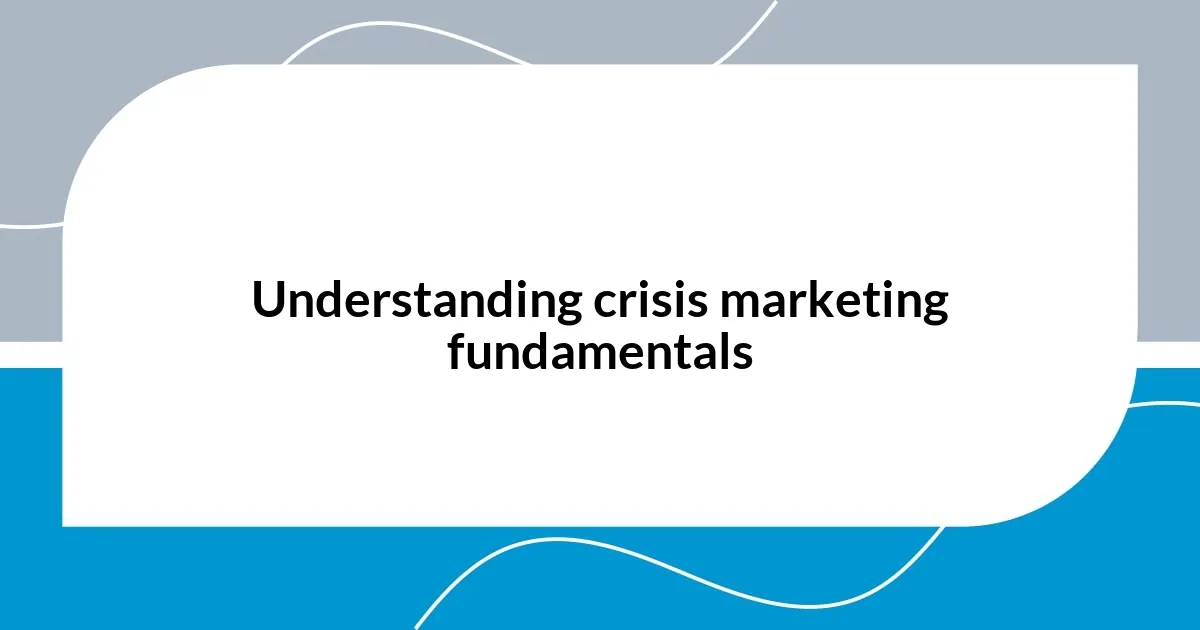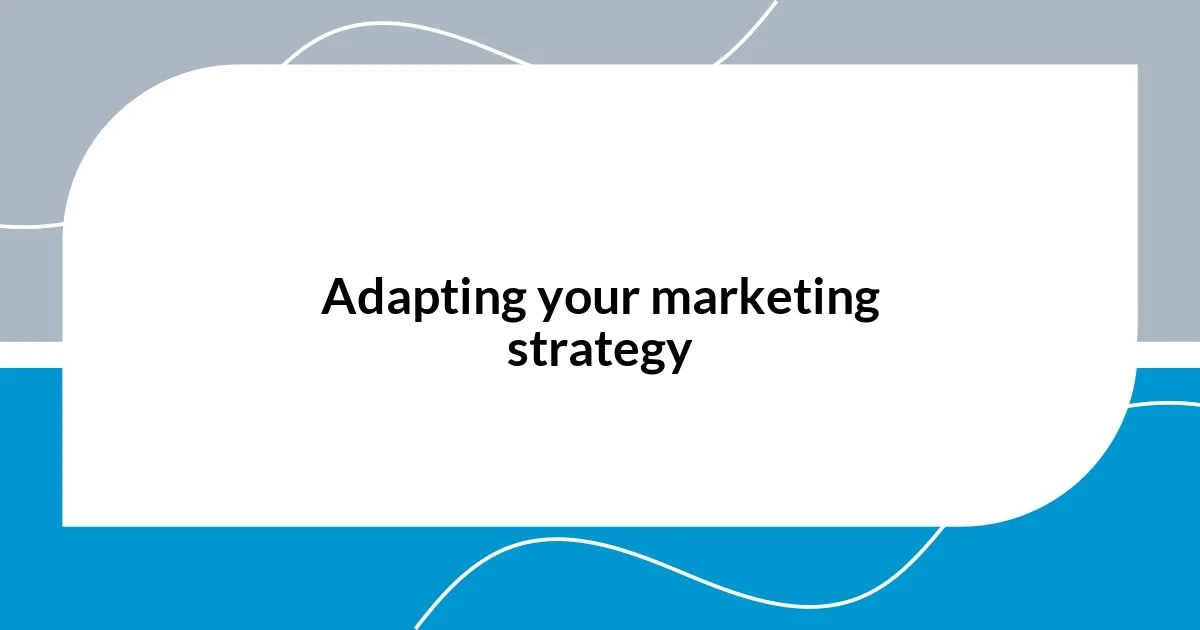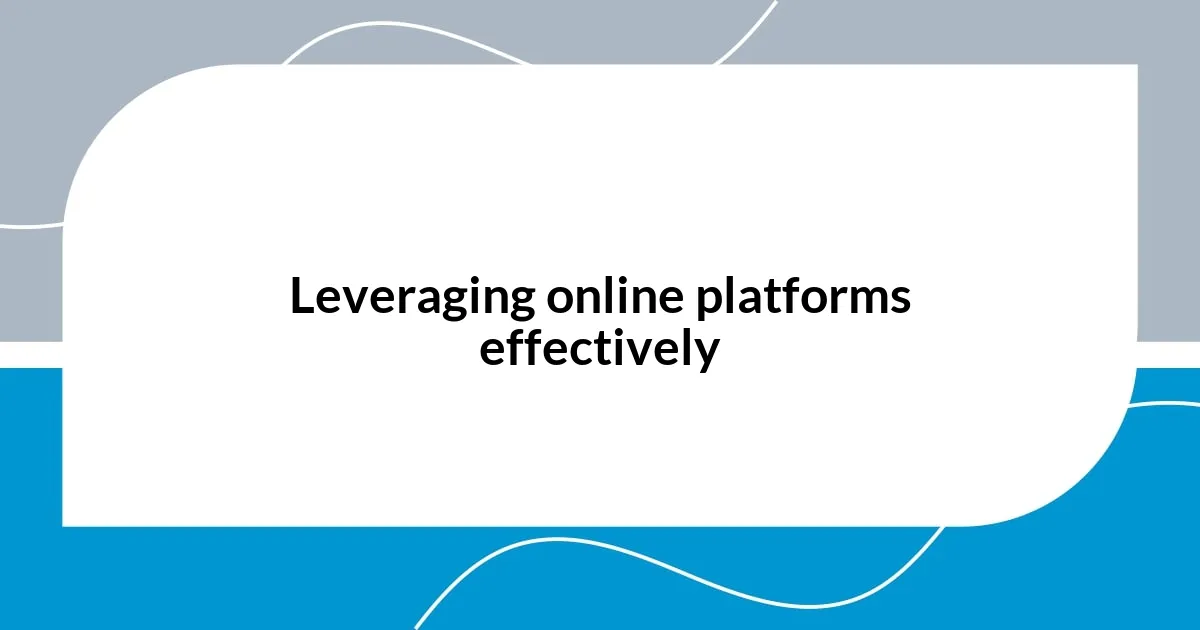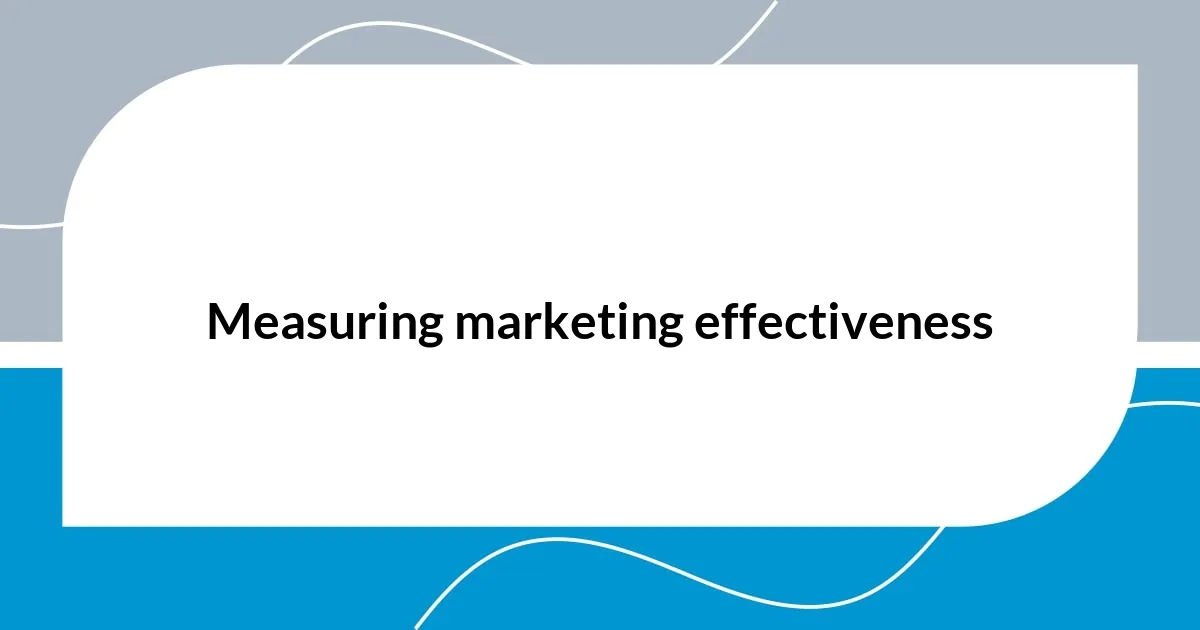Key takeaways:
- Crisis marketing relies on transparency, empathy, and authentic customer communication to foster trust and community.
- Adapting marketing strategies during crises requires flexibility, ongoing assessment, and alignment with community needs.
- Leveraging online platforms enhances engagement and creates meaningful connections by personalizing messaging and showcasing brand authenticity.
- Measuring marketing effectiveness through data analysis, A/B testing, and customer feedback is crucial for refining strategies and understanding audience sentiment.

Understanding crisis marketing fundamentals
Crisis marketing is all about resilience and adaptability. I’ve seen businesses that initially struggled during tough times, only to emerge stronger by authentically connecting with their customers’ needs. It makes me wonder: how can we best respond when our audience is looking for reassurance and support?
Understanding the fundamentals involves recognizing that transparency is essential. When I was involved in a campaign during a challenging economic phase, our team communicated openly about our limitations and the steps we were taking to ensure service continuity. This honesty not only built trust but also created a sense of community—a crucial element in crisis marketing.
Additionally, it’s vital to pivot your messaging to reflect the current sentiment. I recall a brand that transitioned from regular promotional content to sharing uplifting stories and helpful resources during a public crisis. Their shift resonated with me and many others, demonstrating that empathy in your marketing can turn potential backlash into goodwill, reminding us that behind every statistic are real people experiencing real challenges.

The importance of customer communication
When times are tough, effective communication with customers becomes crucial. I’ve experienced firsthand the difference that proactive messaging can make. A few years back, during a sudden crisis, our team sent out regular updates through email and social media. This not only kept our customers informed but also showed them we genuinely cared about their experience and well-being. It felt like we were all in this together, fostering a deeper loyalty.
Here are some essential points to consider about the importance of customer communication during a crisis:
- Timeliness: Swift communication can prevent misinformation and confusion.
- Clarity: Simple, clear messages help customers understand what’s happening and what to expect.
- Empathy: Acknowledging customer fears and frustrations shows that you value their concerns.
- Consistency: Regular updates keep your audience engaged and reassure them that you’re actively managing the situation.
- Two-way dialogue: Encouraging feedback fosters trust and opens the door for valuable customer insights.
I truly believe that in times of uncertainty, how we communicate can make all the difference.

Adapting your marketing strategy
When adapting your marketing strategy during a crisis, you need to be flexible and responsive. I vividly remember a situation where I had to rethink our promotional approach overnight. Instead of pushing sales, we turned our focus toward community support initiatives, which not only aligned with our brand values but also resonated deeply with our audience. This repositioning allowed us to foster a sense of belonging and trust, making our customers feel like they were part of something bigger.
It’s also vital to continuously assess the effectiveness of your adapted strategy. During a recent campaign, we regularly reviewed customer feedback and engagement metrics. I found that this ongoing evaluation not only refined our message but also allowed us to pivot even further based on real-time insights. It’s insightful how tuning into my audience’s needs led to innovative solutions that we hadn’t initially considered.
Lastly, consider leveraging partnerships to enhance your marketing efforts during a crisis. For instance, collaborating with local organizations not only expanded our reach but also amplified the positive message we wanted to convey. I’ve seen businesses thrive by aligning their missions with community needs, reminding us that together, we can weather any storm.
| Key Strategies | Benefits |
|---|---|
| Flexibility to Change Messaging | Builds trust and connection |
| Continuous Assessment | Ensures relevancy and effectiveness |
| Community Partnerships | Enhances brand impact and reach |

Leveraging online platforms effectively
Leveraging online platforms during a crisis can be a game-changer. I remember a challenging time when our business had to pivot quickly to virtual events. By utilizing webinars and live streams, we not only maintained engagement with our audience but also created a space for sharing ideas and support. It struck me how effective these platforms became for fostering a sense of community—people genuinely felt connected even when physically apart.
Social media, in particular, offers an incredible opportunity to humanize your brand during tough times. I once shared a behind-the-scenes look at how our team was adapting operations, and the response was overwhelmingly positive. Customers appreciate seeing the faces behind the brand and understanding the genuine efforts being made. Have you ever thought about how showing vulnerability can actually strengthen your relationship with your audience?
Additionally, I’ve found that targeted messaging tailored to specific segments on online platforms can yield remarkable results. During a previous crisis, we created content that addressed the unique concerns of different customer groups, ensuring they felt heard and valued. This personalized approach not only increased engagement but also drove home the message that we were there for them, ready to support in any way we could. Isn’t it fascinating how a little extra thought can turn a transactional interaction into a meaningful connection?

Building brand trust during crises
Building brand trust during crises requires a delicate balance of transparency and empathy. I recall a particular instance when our company faced backlash during a difficult economic downturn. Rather than hiding from the criticism, we addressed it head-on. I crafted an open letter expressing our commitment to supporting our customers and employees. This honesty not only calmed the storm but actually reinforced the trust we had built over the years.
In my experience, showing genuine care for the well-being of your audience is incredibly powerful. During a natural disaster in our community, we halted our ad campaigns and focused on sharing resources and support information instead. The heartfelt messages we received highlighted how much that shift resonated with our customers. Have you ever considered how much authenticity matters in times of uncertainty? It solidifies your relationship with your audience, proving that you’re not just another brand; you’re a community ally.
Moreover, it’s essential to consistently communicate your brand values during challenging times. I learned this the hard way when a misstep in messaging cost us dearly in lost trust. Afterward, we realigned our communications to focus on what truly mattered to our followers, addressing their concerns while upholding our brand values. This clarity allowed our community to see us as reliable and committed—not just during crises but beyond them. Trust isn’t built overnight; it’s cultivated through consistent and thoughtful actions.

Measuring marketing effectiveness
Measuring marketing effectiveness during a crisis is crucial for understanding what strategies resonate with your audience. I remember a time when we shifted our focus to digital campaigns. By utilizing tools like Google Analytics, we dug deep into user behavior and engagement metrics, allowing us to track which messages were hitting the mark. It was enlightening to see how certain approaches not only drove traffic but also encouraged meaningful interactions. Have you ever felt that thrill of discovering which campaign truly connects with your audience?
Another aspect I’ve noticed is the importance of A/B testing during uncertain times. In one campaign, we tested two versions of messaging: one focused on compassion and support, and the other on service availability. The results were astonishing, showing how a gentle approach can significantly outperform a straightforward sales pitch. This experience reinforced my belief that during a crisis, it’s essential to be in tune with your audience’s emotional state; the numbers really told that story.
Lastly, gathering feedback directly from your customers can be a game-changer. I once initiated a quick survey to gauge how our messaging was landing. The heartfelt responses demonstrated not just what we were doing right, but also the areas where we needed to adjust. It’s remarkable how listening carefully can lead you to make impactful changes. How often do you take the time to engage directly with your clients about their perceptions? It’s an eye-opening practice that goes a long way in refining your marketing efforts and reinforcing your connection with your audience.